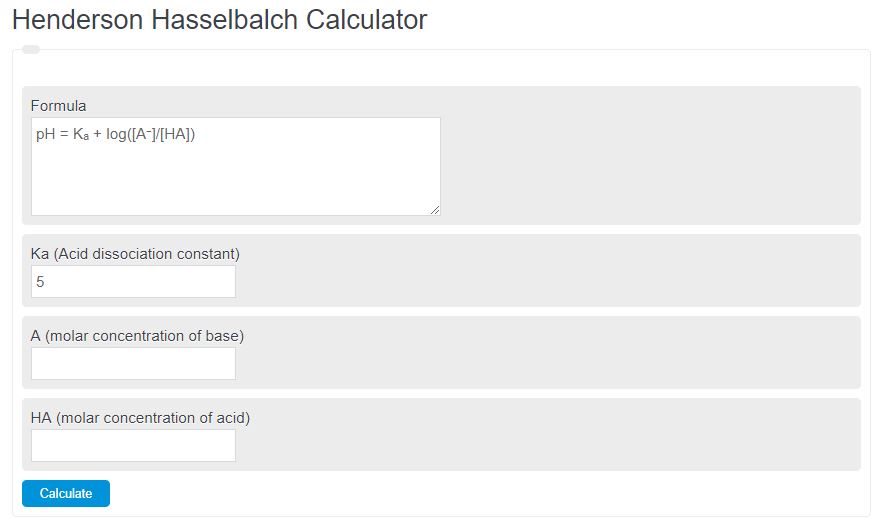Enter the conjugate base, acid [HA], and dissociation constant into the calculator to calculate the pH of a solution.
- Arrhenius Equation Calculator
- Molarity Calculator
- Dilution Calculator
- Vapor Pressure Calculator (Solvent/Solution)
- pH to H Calculator
Henderson Hasselbalch Formula
The following formula is used to calculate the pH of a solution using the Henderson Hasselbalch equation.
pH = Kₐ + log([A⁻]/[HA])
- Ka is the acid dissociation constant
- A- is the molar concentration of the base in molars
- HA is the molar concentration of the acid in molar
pH is a measure of the solutions acidity of a solution.
Henderson Hasselbalch Equation Definition
What is the Henderson Hasselbalch equation? The Henderson Hasselbalch equation is a formula used to calculate the pH (acidity) of a buffer. The equation is denoted: pH = Kₐ + log([A⁻]/[HA]).
What is a buffer? A buffer is a mixture or solution that contains a weak acid and a conjugate base. The combination of these two components, while at equilibrium,
How to calculate buffer pH?
The following is an example problem that uses the Henderson-Hasselbalch equation to determine the pH of a buffer.
- First, determine the acid dissociation constant. For this example, the acid dissociation constant is found to be 3.
- Next, determine the molar concentration of the base. The molar concentration is found to be or 3 moles per liter.
- Next, determine the molar concentration of the acid. For this problem, the molar concentration of the acid is found to be 4 moles per liter.
- Finally, calculate the buffer pH. Using the formula, the buffer pH is found to be 3 + log ( 3/4) =
Does the henderson-hasselbalch equation work for bases? The henderson-hasselbalch equation is used to find the pH values for buffer solutions, which are acid-base solutions, so the equation itself is used to bases.
When does the henderson-hasselbalch equation fail? The equation does not work in situations where the buffer solutions are highly diluted through the water.

